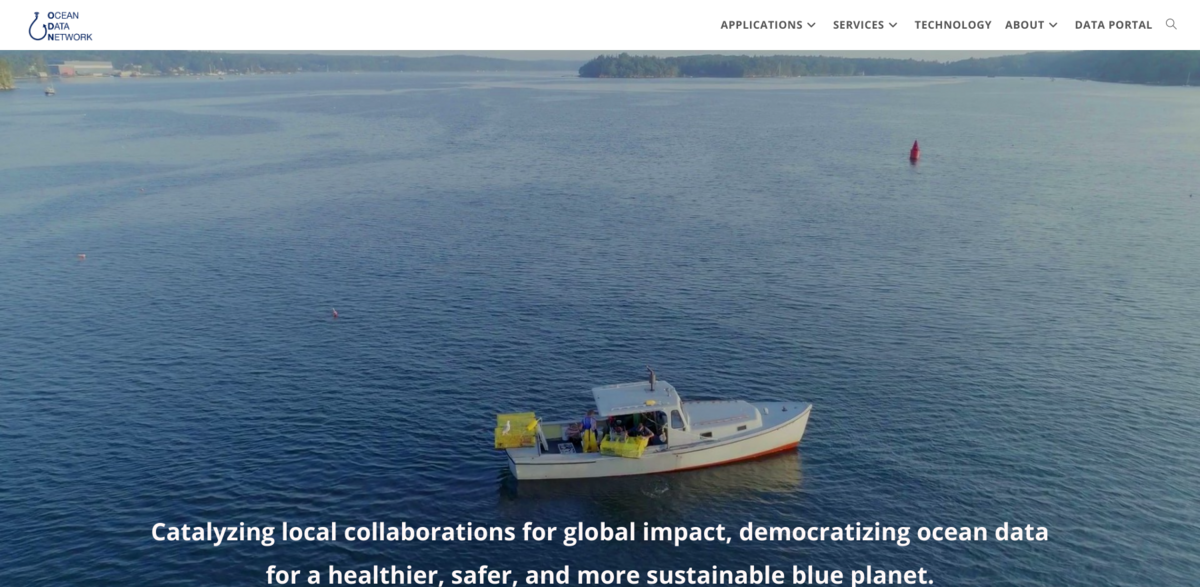What is the Ocean Data Network (ODN) Project?
The Ocean Data Network (ODN) project is all about catalyzing local collaborations for global impact, aiming to democratize ocean data for a healthier, safer, and more sustainable blue planet. It leverages a unique approach by using fishing vessels as ocean observation platforms. Instead of relying solely on traditional methods, oceanographic instruments are mounted directly on fishing gear—nets, traps, and the like. These instruments collect profiles of the water column as the gear drops down and is hauled back up during regular fishing operations. Once the gear surfaces, data is quickly relayed to a deck hub via Bluetooth and then automatically uploaded to the cloud. And the best part? This happens without interfering with the fishing itself.
Main Benefit: Unlocking the Power of Fishing Vessels for Ocean Data
The ODN project leads the Fishing Vessel Ocean Observing Network (FVON), an international group pushing fishing vessel-based ocean observing forward. This initiative is endorsed by the UN Decade of Ocean Science and Sustainable Development under the GOOS CoastPredict program. The goal? To integrate fishing vessel observations into the Global Ocean Observing System, making it a globally accepted tool and the coastal counterpart to the Argo program.
- Oceans absorb over 90% of excess heat caused by climate change.
- Oceans account for about one-third of Earth’s carbon sequestration.
- Coastal oceans remain largely data-poor, even in well-resourced nations.
- Fishing vessels can increase observed met-ocean data by 10 to 100 times in coastal zones.
- Data collection happens seamlessly during normal fishing operations.
Climate Monitoring: Shedding Light on Coastal Oceans
Climate change is a massive challenge, and the oceans play a huge role in it. They soak up most of the excess heat and help lock away carbon. But here’s the kicker—coastal oceans, where many critical ocean-climate processes start, are still largely a mystery. Even countries with big budgets struggle to gather enough data in these areas, and developing nations face even bigger gaps. That’s where fishing vessels come in. They provide a cost-effective way to collect subsurface ocean data with geographic and temporal resolution that no other network can match. It’s like turning on the lights in a room that’s been dark for too long.
Weather and Ocean Forecasting: Feeding the Models
Ocean models have gotten more powerful than ever, but they’re starving for data. Covering over 70% of the Earth’s surface, oceans are still woefully under-measured, especially near the coast. These coastal zones are home to many fishing fleets, which means there’s a huge opportunity to boost the amount of observed meteorological and oceanographic data by 10 to 100 times. ODN takes the diverse data collected from different fishing practices and turns it into standardized, well-documented information that can be plugged directly into operational models or analyses. This means better forecasts, better understanding, and ultimately, better decisions.
Fisheries: Smarter Management Through Real-Time Data
For fisheries, having accurate environmental data right where the fish are is a game-changer. It supports more dynamic and Ecosystem Based Fisheries Management strategies. Unlike satellite data, which can only see the surface, oceanographic data collected on fishing gear dives deep into the ecosystem, showing how environmental conditions actually impact fisheries. Plus, many models that predict subsurface conditions are inaccurate exactly where it matters most—because they lack real data to validate and run those models. Fishing vessel observations fill that gap, providing the insights fisheries science desperately needs.
Defense: Enhancing Strategic Ocean Awareness
Many fishing regions are ocean data deserts but are also strategically important chokepoints. The physical oceanographic features measured by ODN impact things like acoustic propagation and ranges, turbidity and optical conditions, surface and subsurface currents, and the buoyancy of sub-surface vessels. Fishing vessel ocean observation creates a persistent swarm of data points, offering distributed meteorological and ocean awareness that boosts operational predictability. In other words, it’s a smart, cost-effective way to keep an eye on critical ocean areas.
Project Impact: Linking to Sustainable Development Goals (SDGs)
- SDG 13: Climate Action – Improving climate monitoring and ocean health.
- SDG 14: Life Below Water – Enhancing ocean observation and sustainable fisheries management.
- SDG 9: Industry, Innovation, and Infrastructure – Advancing innovative ocean data collection methods.
- SDG 17: Partnerships for the Goals – Fostering international collaboration through FVON.
Looking Ahead: The Future of Ocean Observation
The Ocean Data Network project is setting the stage for a new era in ocean observation. By tapping into the vast, underutilized resource of fishing vessels, it’s opening up possibilities for better climate monitoring, improved weather and ocean forecasting, smarter fisheries management, and enhanced defense capabilities. This approach not only fills critical data gaps but also empowers coastal communities and nations to participate in global ocean science. The ocean is vast and complex, but with projects like ODN, it’s becoming a little less mysterious every day.





















